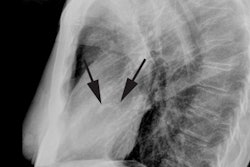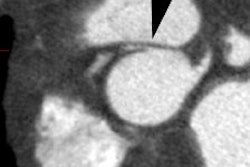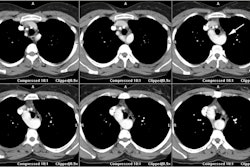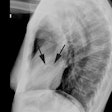Ventricular Diverticulum:
Clinical:
Ventricular diverticula can be found in up to 2.2% of patients on cardiac CT and this is a much higher incidence compared to previously reported (0.04-0.4%) [1]. Diverticula are most commonly found in the apex and perivalvular areas, although they have been reported in nearly all locations (except the ventricular septum) [1]. The diverticula can be solitary or multiple [1]. Apical diverticula have a reported high association (over 70%) with other congenital anomalies such as septal defects, pulmonary stenosis, and dextrocardia [1]. The lesion is often asymptomatic and discovered incidentally [1]. Symptomatic patients may have ventricular arrhythmias ranging from occasional premature ventricular contractions to sudden cardiac death [1]. Congenital diverticula need to be distinguished from acquired aneurysms such as those that occur following MI or myocarditis [1].
X-ray:
The diverticulum appears as a tract of contrast extending from the ventricular chamber into the myocardium [1]. The connection to the ventricle can be wide or narrow [1]. It is best seen during diastole and is commonly (70%) obliterated during systole [1].
REFERENCES:
(1) AJR 2007; Srichai MB, et al. Ventricular diverticula on cardiac CT: more common than previously thought. 189: 204-208






